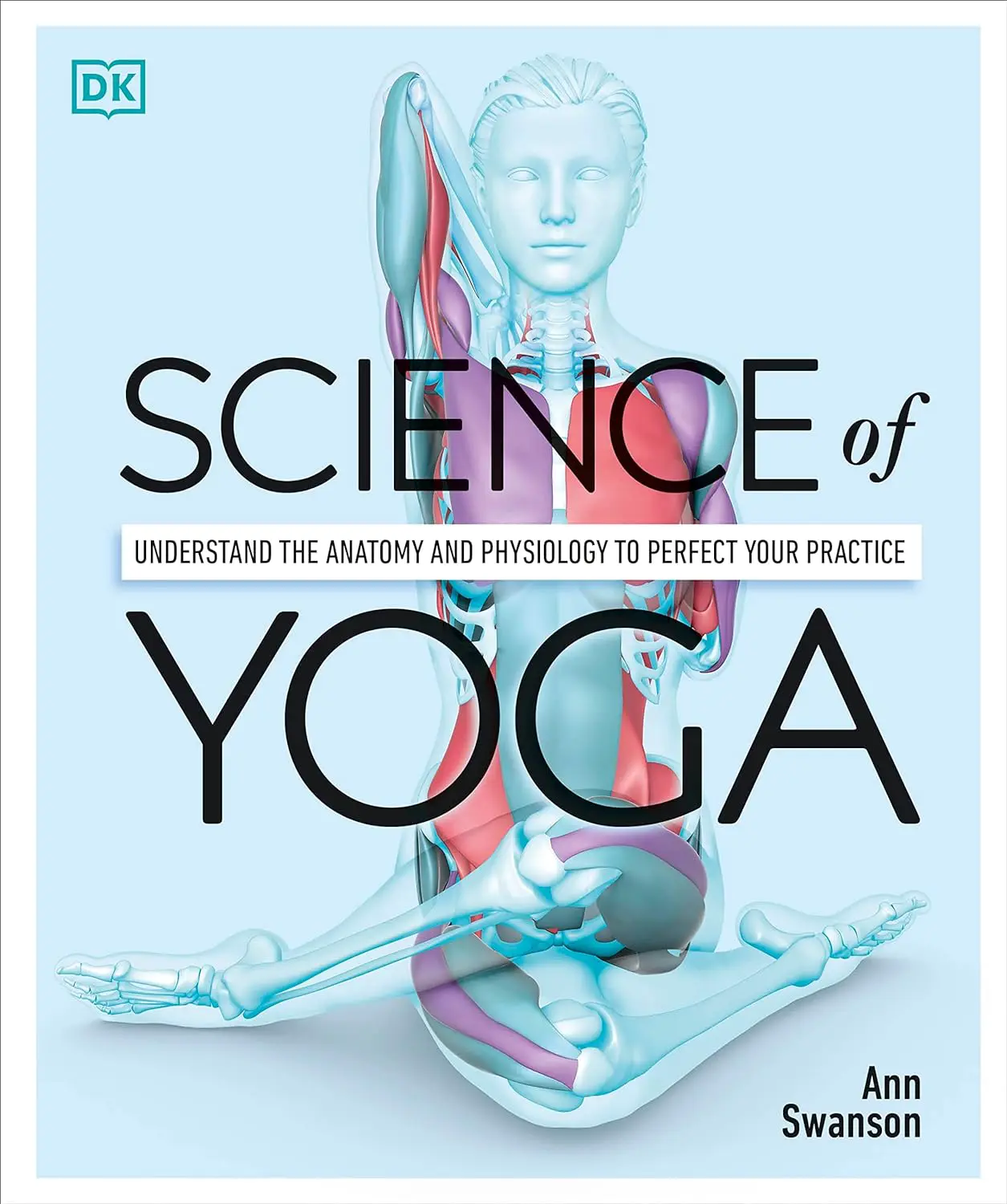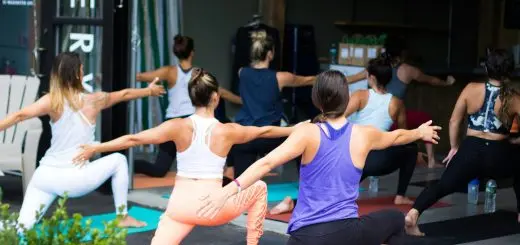How to Become a Yoga Instructor: A Step-by-Step Guide

Looking for more amazing products? Check out our online store and explore our collection here! Happy shopping!
Before diving in, please note: This post is for informational purposes only. If you’d like to know more about how we approach topics, feel free to check out our friendly Disclaimer Page.
Hey there, amazing readers! 
We’re committed to delivering quality posts, and your support (even just sticking around despite the ads) means everything to us. So, bear with us, and thanks for helping us keep the good vibes rolling. Now, on to the fun stuff!
TRANSLATE BUTTON AT THE END OF THE ARTICLE
A Quick Overview
Are you thinking about becoming a yoga instructor?
Maybe you’ve taken a few classes, and something in you just clicked.
The idea of guiding others on their yoga journey sounds exciting, but where do you even begin?
Fear not!
This guide will walk you through the essential steps to become a yoga instructor, from discovering your passion to launching your career.
So, roll out your mat, take a deep breath, and let’s get started!
Discover Your Passion for Yoga and Teaching
Before diving headfirst into training programs, take a moment to reflect on your love for yoga.
I remember the first time I found myself in a sun salutation.
The way my body moved, the calmness of my mind—it was as if I had found a long-lost friend.
Ask yourself: What draws you to yoga?
Is it the physical challenge, the mental clarity, or the community aspect?
Passion is contagious.
When you teach, your enthusiasm can inspire your students.
If you’re just in it for the paycheck, your students will sense it.
Your passion should drive you to share the transformative effects of yoga, not just the poses.
Think about the moments that moved you during your practice.
Those experiences can guide your teaching style.
Talk to fellow yogis about their journeys.
Many instructors will happily share their stories and advice.
You might find that their paths resonate with you.
Also, consider how you feel when you teach.
Even if it’s just a few friends in your living room, pay attention to your feelings.
If the thrill of guiding others lights you up, you’re on the right track.
Reflection Questions:
What have you gained from your yoga practice?
Are you excited about the idea of helping others discover these benefits?
Have you ever imagined yourself leading a class?
Understanding the Role of a Yoga Instructor
So, what does it mean to be a yoga instructor?
It’s more than just guiding people through poses.
Think of it as being a facilitator of growth, a source of support, and a beacon of calm.
Your role involves creating a safe space where students can explore their minds and bodies.
As an instructor, you’ll need to wear multiple hats:
Motivator: Encourage students to push their limits.
Guide: Help them understand proper alignment and breathing techniques.
Listener: Pay attention to their needs and adapt classes accordingly.
Empathizer: Understand that everyone has different backgrounds and capabilities.
Teaching yoga is also about community.
You’ll foster connections among students, helping them feel like they are part of something bigger.
Many people come to yoga to find solace and community, so being that welcoming presence is essential.
Lastly, remember that you are always learning.
The yoga world is vast, and no one knows it all.
Embrace the journey of continuous growth.
Whether it’s attending workshops, reading books, or deepening your practice, the learning never ends.
Choosing the Right Yoga Style for You
Yoga isn’t one-size-fits-all.
With a plethora of styles available, it’s crucial to find one that resonates with you.
Are you drawn to the intensity of Ashtanga or the fluidity of Vinyasa?
Maybe the gentleness of Yin or the restorative nature of Hatha speaks to you more.
Here are some popular styles to consider:
Hatha: Great for beginners, focusing on fundamental poses.
Vinyasa: A dynamic flow of poses, often synchronized with breath.
Ashtanga: A more rigorous, structured practice with a set series of poses.
Yin: A slow-paced style that targets deep connective tissues.
Restorative: Focuses on relaxation and stress relief through props.
As you explore different styles, pay attention to how each makes you feel.
Attend various classes, and don’t hesitate to ask instructors about their experiences and philosophies.
This exploration will not only enhance your practice but also give you insight into what you might want to teach.
Researching Accredited Yoga Teacher Training Programs
Once you’ve found your groove, it’s time to explore teacher training programs.
Not all programs are created equal, so look for those accredited by recognized organizations like Yoga Alliance.
These programs will provide a solid foundation in teaching and philosophy—things you’ll rely on mightily.
When researching, consider the following:
Curriculum: Does it cover the essentials of anatomy, philosophy, and teaching methodology?
Duration: Most programs last a minimum of 200 hours, but there are also immersive options.
Location: Would you prefer an in-person experience or an online course?
Reputation: Look for reviews and testimonials from past students.
Also, don’t shy away from reaching out to program coordinators with questions.
Understanding their approach and style can help you make an informed decision.
Remember, this program will shape your teaching journey, so choose one that resonates with you.
Setting Your Goals: What Do You Want to Achieve?
Goals provide direction.
Before stepping into a training program, take a moment to outline what you hope to achieve.
What does your vision look like?
Do you want to teach full-time, part-time, or just for fun?
Here are some ways to hone in on your goals:
Define Your Teaching Style: Will you focus on beginners, seniors, or specific conditions?
Consider Your Audience: Who do you want to connect with?
Create Short and Long-Term Goals: Set achievable milestones.
For instance, maybe you want to teach your first class within six months of certification.
Tracking your progress helps maintain motivation.
Celebrate small victories along the way.
Each step brings you closer to your ultimate goal of becoming a yoga instructor.
Planning Your Budget for Yoga Training Costs
Let’s talk about the dollars and cents.
Training programs can be a significant investment, so it’s wise to plan your budget ahead of time.
Don’t let finances deter you from your dreams.
Here are some key expenses to consider:
Tuition Fees: Ranging anywhere from a few hundred to several thousand dollars.
Study Materials: Books, props, and online resources add up.
Travel Costs: If you’re attending an in-person program, factor in transport and accommodation.
Insurance: Once you start teaching, personal liability insurance is highly recommended.
Consider looking for scholarships or installment payment plans that some schools may offer.
Additionally, don’t forget to budget for continual education after certification.
Attending workshops and conferences can deepen your knowledge and skills.
Diving Into Yoga Philosophy and Anatomy Basics
Now that you’re all set with your goals and budget, it’s time to dive deep into yoga’s rich philosophical background.
Understanding concepts like the Eight Limbs of Yoga can provide deeper insights into your practice and teaching.
Incorporating yoga philosophy into your classes enriches the experience for your students.
It goes beyond postures and breath.
It’s about mindset and lifestyle.
Anatomy is equally crucial.
Knowing how the body works helps prevent injuries and allows for safer practices.
You don’t need to become a doctor, but understanding basic skeletal and muscular systems will make you a more effective teacher.
Consider taking additional courses in yoga anatomy or reading books on the subject.
The more informed you are, the more you can help others.
Gaining Teaching Experience Through Practice Classes
Practice makes perfect!
Once you’ve completed your training, it’s time to apply what you’ve learned.
Don’t be shy; start by teaching friends or family.
This low-pressure environment allows for experimentation without the pressure of a formal class.
Create practice classes to refine your skills.
Focus on:
Communication: How do you convey instructions clearly?
Presence: Are you engaging and confident?
Feedback: Encourage participants to share their experiences and suggestions.
Learning from feedback is invaluable.
Consider offering free or donation-based classes to build your experience and confidence.
This way, you create a win-win situation: you gain teaching experience while students enjoy a class at little to no cost.
Mastering the Art of Class Sequencing and Flow
Crafting a well-structured class is an art form.
A good sequence flows smoothly from one pose to the next, creating a cohesive experience for students.
Start with a warm-up, build up to challenging poses, and always remember to cool down.
Here are some tips for mastering class sequencing:
Set an Intention: Begin with a theme or focus for your class.
Plan Transitions: Smooth transitions help maintain the energy of the class.
Incorporate Breath: Encourage students to connect breath with movement.
Adapt for All Levels: Consider different abilities and offer modifications.
Practice designing class sequences at home.
Share them with fellow instructors or mentors for feedback.
As you gain experience, you’ll naturally develop your style and flow.
Building Confidence: Overcoming Your Teaching Fears
Nerves are normal.
Even experienced instructors feel a flutter before stepping onto the mat.
Remember, you’re sharing something powerful.
Your own journey and passion will shine through, helping others connect with their practice.
Here are some strategies to build confidence:
Visualize Success: Picture yourself leading a successful class.
Prepare Thoroughly: Familiarity with your sequence will ease nerves.
Practice Self-Compassion: It’s okay to make mistakes.
Learn and grow from them.
Seek Support: Join communities of fellow instructors for encouragement and advice.
Remember, every great instructor started somewhere.
Don’t let fear hold you back from sharing your knowledge and passion for yoga.
Obtaining Your Yoga Teaching Certification
Once you’ve gained confidence and experience, it’s time to obtain your certification.
Completing a recognized program will officially allow you to teach.
Ensure your training meets the Yoga Alliance’s standards if you want to register with them.
Certification requires commitment and effort.
Most programs include practical teaching experience, exams, and sometimes written assignments.
Upon completion, you’ll receive your certification, and you can officially call yourself a yoga instructor!
Celebrate this achievement.
It’s a significant milestone in your yoga journey.
Launching Your Yoga Career: Tips for Success
Congratulations!
You’re officially a yoga instructor.
Now what?
The journey continues as you launch your career.
Here are some tips to help you succeed:
Build Your Network: Connect with local studios, teachers, and students.
Create an Online Presence: Use social media to share your journey, classes, and philosophy.
Consider Specializations: Further training in areas like prenatal yoga or trauma-informed practice can set you apart.
Seek Opportunities: Look for subbing opportunities or workshops to gain experience.
Most importantly, remain authentic.
Bring your unique voice and style to your teaching.
The connection you form with your students is what keeps them coming back.
Conclusion
Becoming a yoga instructor is a rewarding journey filled with opportunities for growth, connection, and creativity.
From discovering your passion to launching your career, each step is essential in shaping who you are as both a teacher and a yogi.
Embrace your path, share your light, and remember: the yoga community is waiting for your unique contribution.
So, roll out that mat, breathe deeply, and let your journey unfold!

The Enlightenment Journey is a remarkable collection of writings authored by a distinguished group of experts in the fields of spirituality, new age, and esoteric knowledge.
This anthology features a diverse assembly of well-experienced authors who bring their profound insights and credible perspectives to the forefront.
Each contributor possesses a wealth of knowledge and wisdom, making them authorities in their respective domains.
Together, they offer readers a transformative journey into the realms of spiritual growth, self-discovery, and esoteric enlightenment.
The Enlightenment Journey is a testament to the collective expertise of these luminaries, providing readers with a rich tapestry of ideas and information to illuminate their spiritual path.
Our Diverse Expertise
While our primary focus is on spirituality and esotericism, we are equally passionate about exploring a wide range of other topics and niches 

To ensure we provide the most accurate and valuable insights, we collaborate with trusted experts in their respective domains 
Our blog originally focused on spirituality and metaphysics, but we’ve since expanded to cover a wide range of niches. Don’t worry—we continue to publish a lot of articles on spirituality! Frequently visit our blog to explore our diverse content and stay tuned for more insightful reads.
Hey there, amazing reader! 
Check out our store here and take a peek at some of our featured products below! Thanks for being awesome!










